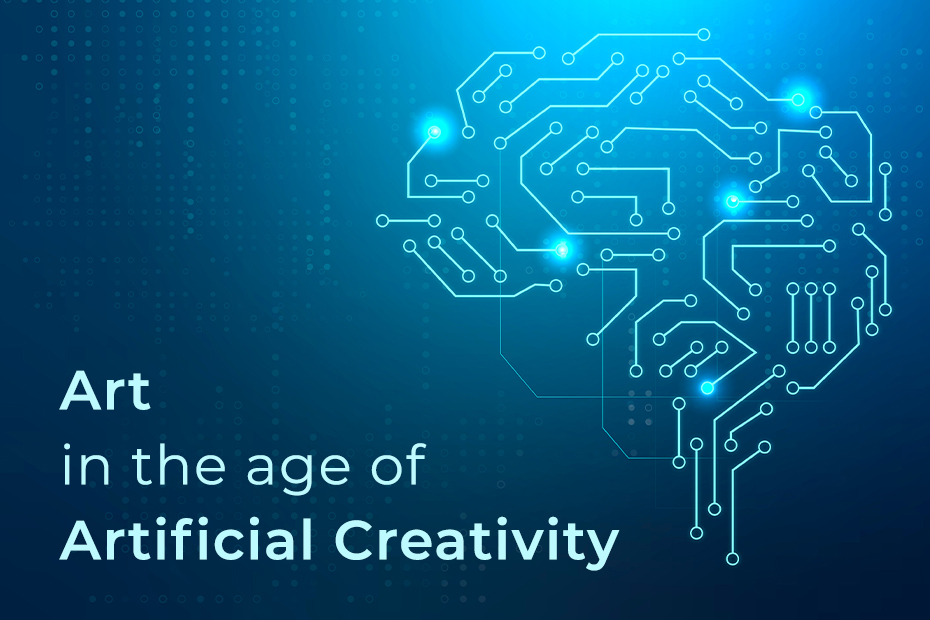Discover how artists can harness the power of GenAI, overcome challenges, and forge genuine connections in a world saturated with algorithmic art.
Vieunite uses Artificial Intelligence (AI) to power its curatorial tools, and to connect artists and viewers. But Generative AI (GenAI) has rapidly emerged as a powerful tool for creating images, text, music, and films. This uses algorithms and vast datasets to generate material that mimics human creativity. So, what do artists need to know about this powerful new technology? How can they compete?
Is AI a threat to artists?
One of the main concerns felt in the industry is the impact of GenAI on artists and photographers. Retail spaces and even well-established image banks, like Shutterstock, are now offering GenAI alternatives to human artwork. This is a competitive threat to artists’ livelihoods. Midjourney and Stable Diffusion are two popular GenAI platforms. They have used artists’ work without permission or option to remove to train their models, and this rubs salt into the wound, leading to court cases and unprecedented legal concerns1.
Ethical alternatives exist, such as Adobe’s Firefly, which was trained on images with the artists’ permission. Another example is Vieutopia, which prioritises artists’ control and recognition. These two examples support a symbiotic relationship with artists.
GenAI – a surprising history
GenAI has gone mainstream over the last couple of years, but its history dates back to the early 1950s, emerging from pioneering digital art2. Early projects like Harold Cohen’s AARON autonomously generated drawings, showcasing the intersection of human creativity and computational power. AARON’s work from the 1970’s is in the collection of the Victoria and Albert Museum, in London.
In 2016, Dr Ahmed Algammal’s AICAN employed deep learning techniques to create visually stunning artworks in various styles. What is unusual about AICAN is that it pairs a mimetic faculty (the ability to emulate or copy) with a more disruptive sense of creativity. In this unusual twin-track approach, a generated image is assessed first for being ‘like’ an existing body of art, but then assessed again to see if it is also sufficiently ‘dislike’ that body to be considered new. Only those images that pass both tests are accepted by the algorithm.
The Vieutopia platform takes a different approach by combining stroke detection algorithms and art-historical training. This generates images with a strong sense of human touch, facilitating human connection rather than replacing human artists. The platform also serves to educate users about the different artistic styles and could foster an interest in art and art history.
These three examples, AARON, AICAN, and Vieutopia all contribute to art practice, and can be seen as being more art-centred than other GenAI platforms. By contrast mainstream GenAI focuses on delivering familiar content, and this is like copying a photograph. It’s impressive, but not very creative.
The Stochastic Parrot
GenAI without creative human intervention can create stunning results. Dr Emily Bender has critiqued the limitations of current AI systems that are trained on vast amounts of data without grasping the underlying meaning or context of that data. She calls this the “stochastic parrot problem”3, because these systems mimic human language and creativity, but with no understanding.
The problem is made acute because humans seek meaning, and we do this by supposing that there is a ‘mind’ behind apparently cultural objects. In the case of GenAI, of course, there is not. This may seem like a particularly ‘artistic whinge’, without broader significance, but our tendency to project intention in this way is a vulnerability that can be exploited by bad actors, as in the creation of forgery, fake news, or propaganda. At a more basic level, it explains the strange aesthetic ‘hollowness’ of much AI generated content: the lights may be on, but there’s nobody home. The fact that artists are human is an advantage that they should exploit.
What should artists do?
The answer to this question comes in two parts. The first is that to stay ahead, artists should learn about and use AI tools like the new Photoshop Beta from Adobe, which integrates the GenAI capacity of Firefly into the industry-standard tool for creative workflow. Another interesting platform is Runway, a new platform from Dr Algammal. Both allow artists to train their own models, using their own datasets. Not every artist is going to want to use them, but knowing about them, and knowing what they can do, is a must.
The second part of the answer is more about what artists can do for their viewers. Artists should emphasise their personal stories and subjective perspectives to differentiate themselves in a market saturated with algorithmic images. Humans are inherently interested in other humans, not machines. So, write your artist statements in the first person and share your creation stories with your audience. This will help to forge a meaningful connection between you and your audience, and this is something that a machine cannot do.
In conclusion, GenAI has both positive and negative implications for artists. By understanding and embracing AI tools and sharing their unique stories, artists can navigate the evolving landscape and connect with their audience on a deeper level.

Benedict is Vieunite’s Cultural Director and a lecturer at Nottingham Trent University.
